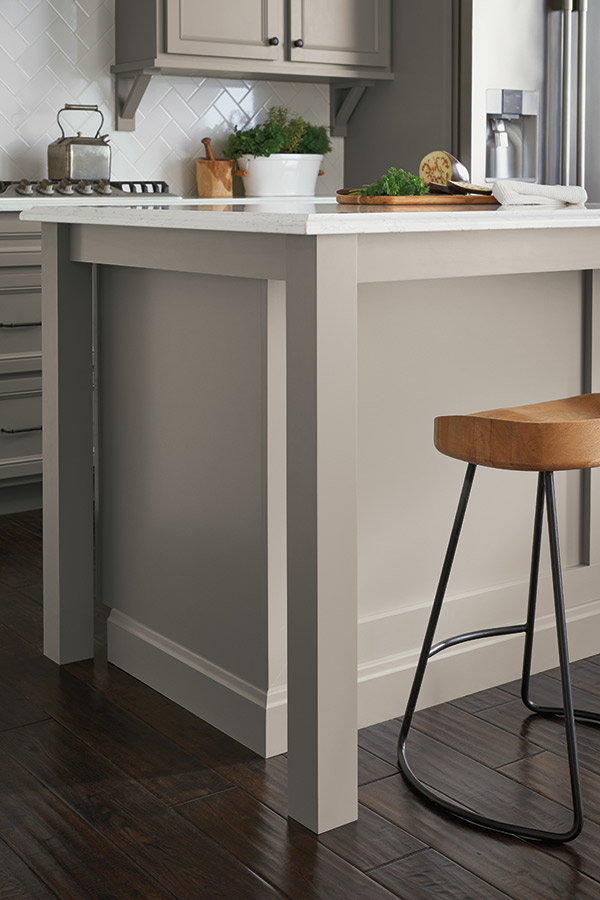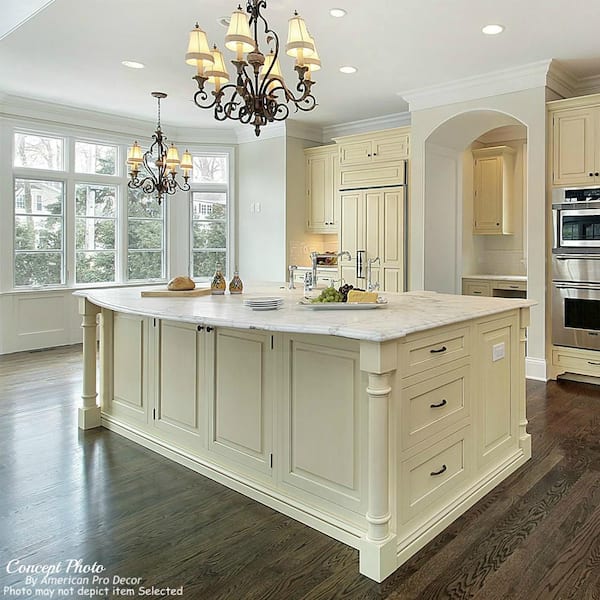Secret Considerations for Finding the very best Legs For Kitchen Island for Your Layout
When picking the suitable legs for your kitchen area island, several key factors to consider enter into play that can considerably impact both capability and aesthetics. The option of material, style, and elevation should straighten with your total kitchen area design to make certain a harmonious look. Additionally, security and maintenance requirements are important for long-lasting use and ease of treatment. Comprehending these variables can boost your kitchen area's functionality and aesthetic allure, but the subtleties of each consideration can often be ignored. What ramifications might these selections carry your kitchen area's overall atmosphere?
Determine Your Design Preference
When selecting the perfect legs for your kitchen island,Identifying your design choice is essential. The legs of your kitchen island not just serve a functional purpose but likewise add dramatically to the total visual of the space. As a result, determining your design style-- be it modern, rustic, standard, or industrial-- is essential.
For a modern kitchen area, think about smooth, minimalistic legs that enhance open spaces and clean lines. Standard kitchen areas commonly favor transformed or elaborate legs, which can add a touch of style and class.
In addition, think about the height and percentage of the legs in connection with the island's surface area. This makes certain the visual equilibrium and capability needed for everyday use. Evaluating the existing aspects in your kitchen, such as cabinets and devices, can likewise direct your choice, making sure cohesiveness in design. Ultimately, your design choice will influence not just the option of legs however additionally the total harmony of your kitchen's design.
Select the Right Product
Choosing the ideal product for your kitchen island legs is pivotal in guaranteeing both longevity and aesthetic appeal. Various materials provide unique benefits, and the option usually mirrors your layout choices and useful needs.
Timber is a preferred selection, giving heat and convenience. It can be tarnished or repainted to match your cooking area style, making it versatile to numerous designs, from rustic to contemporary. Timber may need routine maintenance to preserve its look and honesty.

If you seek an one-of-a-kind touch, think about acrylic or glass products. They can create an illusion of room and lightness in your kitchen area, making them an excellent option for smaller sized locations - Legs For Kitchen Island. However, these choices might require cautious handling and upkeep to avoid scratches.
Ultimately, the material you select need to align with your kitchen area's general layout, ensuring that the legs serve both decorative and functional functions.
Think About Elevation and Percentages
When making a kitchen island, height and proportions play an essential role in guaranteeing performance and comfort,. The common elevation for a kitchen area island normally varies from 36 to 42 inches, straightening with standard counter elevations or bar elevations, respectively. This dimension is important for harmonizing with surrounding feceses and kitchen counters, making it possible for simplicity of use during meal prep work and social interactions.
In addition, the island's percentages need to complement the general kitchen area design. A well-proportioned island ought to not overwhelm the space; instead, it must produce a balanced visual. Take into consideration the ratio between the island's size and size, ensuring it provides ample area without crowding the kitchen area. A general standard is to preserve a width of 24 to 48 why not try these out inches, facilitating activity and availability.
Moreover, the elevation of the legs or base can influence the aesthetic appeal and capability. Taller legs may offer a much more modern-day, airy feeling, while shorter ones can stimulate a conventional, based appearance. Inevitably, thoroughly considering elevation and percentages will cause a kitchen island that is both functionally efficient and visually enticing, enhancing the general design of the area.
Assess Security and Resilience
A cooking area island's legs must not only enhance its height and proportions yet also supply ample stability and toughness to sustain daily tasks. The legs are important to the total capability of the island, as they bear the weight of the counter top and any kind of added loads, such as home appliances or cooking jobs.
When assessing stability, it is vital to consider the leg design and material. Tough steel or strong wood legs often provide exceptional stamina compared to lighter products like crafted timber or plastic. Furthermore, a bigger base can enhance security, minimizing the danger of wobbling or tipping throughout use.
Durability is similarly essential; the legs ought to resist deterioration from day-to-day usage. Consider finishes that protect against scratches, dents, and wetness, especially in a kitchen area environment. Furthermore, examine the top quality of construction, such as joints and attachments, which can dramatically impact the legs' lasting efficiency.
Eventually, purchasing well-crafted legs that focus on stability and durability will certainly guarantee your cooking area island stays a trustworthy work area for years to find, enhancing your culinary experiences while maintaining visual allure.
Factor in Maintenance and Treatment
Upkeep and care are important factors to consider for ensuring the long life and performance of kitchen area island legs. When choosing legs, it is necessary to review the materials used, as various options need varying levels of upkeep. Wooden legs may call for periodic refinishing or securing to prevent dampness damages and scrapes, while metal legs may require routine brightening to keep their sparkle and stop corrosion.
Furthermore, the surface related to the legs can influence upkeep needs. A high-gloss finishing may be simpler to tidy but can show scrapes and fingerprints more conveniently than a matte finish. It is a good idea to choose materials and coatings that complement your way of living; as an example, if you regularly organize events, go with long lasting products that can endure wear and tear.
Furthermore, consider the cleaning process associated with preserving these legs. Smooth surface areas often require very little initiative, while elaborate styles may accumulate dust and grime, necessitating more labor-intensive cleansing approaches. Legs For Kitchen Island. Eventually, factoring in the upkeep and care needed for your chosen cooking area island legs will not just boost their aesthetic charm however also guarantee their practical honesty with time
Conclusion
Finally, choosing the optimal legs for a kitchen area island requires mindful about his consideration of different aspects, consisting of design style, product selection, upkeep, stability, and elevation. Each aspect plays an essential role in making sure that the legs not only boost the visual appeal of the cooking area but likewise provide the needed support and resilience for daily usage. An educated decision will eventually add to a functional and visually pleasing kitchen environment.
The legs of your cooking area island not only serve a useful purpose but also contribute substantially to the total visual of the space.Upkeep and treatment are vital factors to consider for making certain the longevity and performance of cooking area island legs. Wood legs might call for routine refinishing or browse around this web-site securing to stop wetness damages and scratches, while metal legs may need regular brightening to keep their sparkle and stop rust.
Eventually, factoring in the maintenance and care needed for your selected kitchen area island legs will not only boost their visual charm but also guarantee their useful stability over time.
